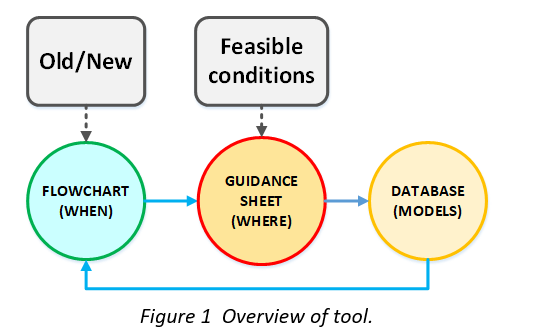Development of physics of failure based prognostics feasibility tool for predictive maintenance
Karthikeyan Karuppusami – UTwente internal assignment (February 2019 – December 2019)
Thesis: http://purl.utwente.nl/essays/80208
SUMMARY
Predictive maintenance is being exploited more in the current period due to its advantages over scheduled maintenance. In predictive maintenance, prognostics is used to estimate the Remaining Useful Life (RUL) of a component. Prognostics is classified into data-driven approach and physics-of-failure (PoF) approach. In the case of a data-driven prognostics approach, assistance is available in selecting a suitable algorithm that considers the available data’s characteristics. In contrast, in a PoF prognostics approach, there is less assistance to select a failure model. High-level procedures do exist in PoF prognostics; however, they do not guide to select a failure model considering life cycle scenarios and feasible conditions within the failure mechanisms. When the procedures are applied within the literature, no justification is provided for the model selected, and the required monitoring techniques to utilise those models are neglected. Therefore a guidance is lacking in PoF prognostics to indicate when (old/new) to use a failure model and where (feasible conditions) to use a failure model.
To solve this, a feasibility tool is developed to aid users in identifying failure models and checking PoF prognostics feasibility. Due to the sheer volume of existing failure models when considering all the failure mechanisms, this research investigates a selected amount of failure models. To achieve this, failure models associated with identified failure mechanisms of a shaft are analysed. This analysis leads to a new proposed classification of failure models based on the methods of estimating the RUL. The new classification has been utilized in developing a flowchart, a guidance sheet, and a database, all of which together form the feasibility tool (see Figure 1). The flowchart aids in checking the feasibility of PoF prognostics and guides in selecting the specific category of models depending upon the life cycle scenario of the component. The guidance sheet aids in identifying the respective feasible failure models from the database for a selected failure mechanism and loading scenarios. The database contains the models according to the new proposed failure model classification.

The flowchart, the guidance sheet, and the database are generic and can be customised for any component. To demonstrate the customizability of the tool, possible configurations of a shaft and the available monitoring techniques for a shaft have been analysed. Based on the results of this analysis, the feasibility tool has been customised for a shaft. In addition to the customizability demonstration, misunderstanding in shaft design has been discussed. As the dominant failure mechanism of a shaft is fatigue, the literature study on the fatigue models has aided in knowing the potential fatigue models for maintenance purposes.
KEY RESULTS
- There are two different ways of RUL estimation within Physics-of-Failure based approach.
- Introduced a new nomenclature for RUL models.
- PoF prognostics is feasible for shafts in certain loading conditions and certain failure mechanisms.
- CDM models are potential models in fatigue failure mechanisms due to the following advantages.
- Combination of damage calculation and number of cycles to failure calculation into a single parent equation.
- Inclusion of load sequence effect.
- Can handle non-proportional stresses.
